Have questions? Call 1-833-BC-WORLD (1-833-229-6753)
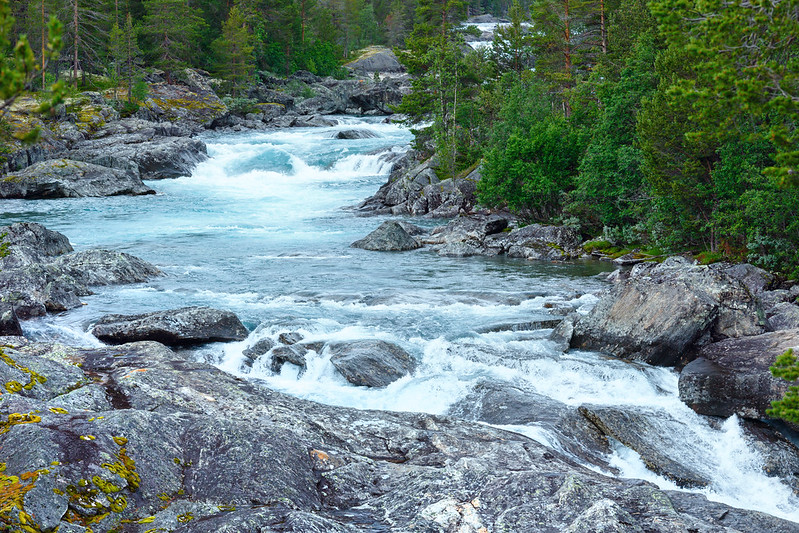
Is My Water Safe to Drink?
By Marc Velicaria
Water is a vital resource for life. People can live up to three weeks without food but only three days without water. This is why it is important that everyone has access to clean drinking water. Unfortunately, water access is limited for many people, and water must be purified in order to be safe to drink. Water can always contain organic and chemical pollutants which make people sick. It is important to know when it is safe to drink water and when it isn’t.
Tap Water
Tap water is the water that comes out of the faucets in our homes and buildings provided by a public community water system. Depending on where you live in the U.S., the water may come from reservoirs, ground water, ice melt, or lakes and rivers. This water is chemically treated and filtered in order to comply with the standards and regulations set by the Environmental Protection Agency (EPA). Although the U.S. has stringent laws on the water coming to our homes, many chemical pollutants could potentially find their way into the public water system. It is generally not recommended to drink unfiltered tap water, especially in big cities like Los Angeles and New York, but it is clean to EPA standards.
Surface Water
Surface water includes water formations like lakes, rivers, ponds, creeks, springs, and the ocean. Ocean water is not drinkable due to its salinity. Freshwater in lakes, rivers, ponds, creeks, and springs is drinkable but only after purification methods. Many rivers, lakes, ponds, and creeks can trace their source from rain, ice-melt, or naturally occurring springs. Natural springs are the result of groundwater coming through to the surface. Groundwater is safe to drink because the soil on top acts as a filter. It also has not yet been exposed to organic and chemical pollutants like rivers and lakes may have.
Risks in drinking unsafe water

Drinking water directly from surface-water sources will increase your chances of becoming sick. There may be invisible microorganisms in the water, such as bacteria, viruses, and cysts. These could come from organic wastes from animals and humans. A few bacterial diseases include cholera, dysentery, and E.Coli. Each of these diseases results in symptoms such as diarrhea, nausea, vomiting, and more. Another risk you may be exposing yourself to is cysts. Cysts are parasitic cells that cause similar symptoms as bacterial diseases, but the difference is that these are parasites that can stay within your system for years. The most common waterborne cysts are Giardia and Cryptosporidium.
How do i purify my water?

Clarity does not necessarily mean purity. Whether it’s water collected from a stream, lake, or creek, we should always assume it may contain harmful pollutants. Before attempting to make your water safe to drink, it’s essential that the water you have is non-turbid (cloudy) to the naked eye. Turbidity may be caused by natural sediments or organic waste. Higher water turbidity increases the possibility of contaminants in the water, which would make you sick. If the only water you have is cloudy, it’s essential to run it through filters in order to strain out the physical pollutants that purification methods cannot eliminate.
Once you have non-turbid water, a method of purification known to many is boiling. Boiling water for at least a minute ensures that all bacteria, cysts, and viruses are killed. Another way to purify water is by distillation. This method is similar to boiling, but instead of simply bringing water to a boil, the water vapor from the process will be directed into another vessel to condense. The new distilled water is now free from any contaminants such as viruses and bacteria as well as chemical pollutants like salt, arson, and lead. Both of these methods are perfect ways to create clean drinking water, but they aren’t very time efficient and require equipment.
Purify with Aquatabs
Chlorination is another great way to purify your water. This is done by adding safe chemicals to water in order to kill bacteria, cysts, and viruses. The chemicals can come in liquid form, or little tablets. Aquatabs water purification tablets’ active ingredient, Troclosene Sodium (NaDCC), reduces 99.99% of cholerae, bacteria, and cysts in the water. Unlike boiling, the chemicals continuously keep the water pure for at least 24 hours by releasing more chemicals when needed. Aquatabs are efficient, lightweight and safe. For those who prefer to drink fresh spring or creek water, but don’t want to risk getting sick, Aquatabs water purification tablets are an easy alternative.
Recent Posts
-
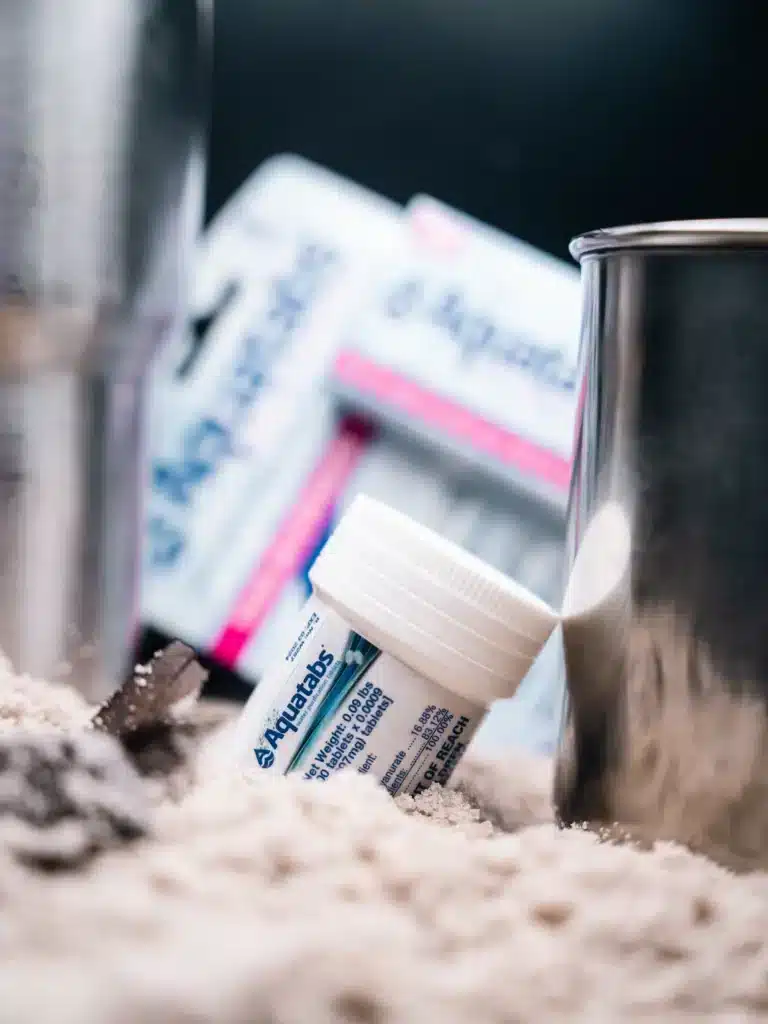
How do Aquatabs Work? The Science Behind Water Purification Tablets
April 18, 2025 UncategorizedBy: Jessica Miller Aquatabs: a fast-working water purification tablet that everyone knows and loves. However, not everyone understands how this helpful little tablet works. There.
-

Aquatabs Celebrates Women’s History Month: Historic Female Adventurers
March 28, 2025 UncategorizedBy: Jessica Miller History is not recorded objectively. Rather, it is dictated by social standards and circumstances. Although these social standards are constantly moving and.
-

Love in Every drop: How aquatabs water purification tablets help protect what matters most
February 13, 2025 UncategorizedBy: Jessica Miller February is here and love is in the air! Congratulations to all for making it through the cold length of January! Whether.
-
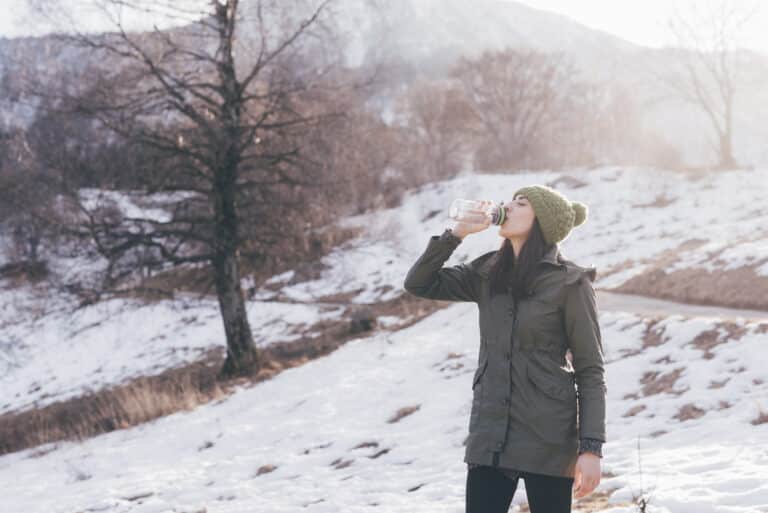
New Year's Resolution: Drink More Water
January 10, 2025 UncategorizedAs we adventure into the New Year, make staying hydrated a top priority! Protect your health at the same time by ensuring your water is.
-
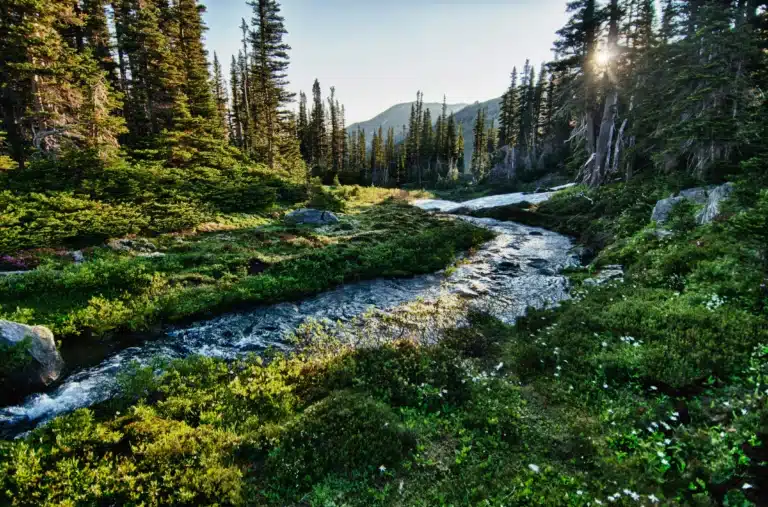
Aquatabs Holiday Gift Guide | Presents for Outdoors Lovers
December 5, 2024 NewsWe know that it can be tough to find that special something for the hiker, camper, or adventurer in your life - but there’s no need to stress! We’ve compiled a list of our favorite gear so that you can choose a gift that will keep giving all year round.
-
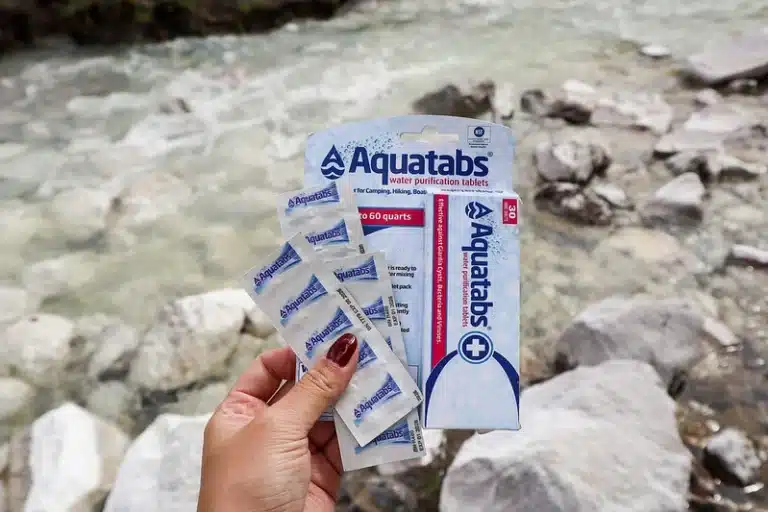
How To Use Aquatabs
November 15, 2024 UncategorizedAquatabs Water Purification Tablets Aquatabs are the world’s leading water purification tablets - and for good reason. These powerful purifiers are globally certified, cost effective,.
Recent Posts
-

How do Aquatabs Work? The Science Behind Water Purification Tablets
April 18, 2025 Uncategorized -

Aquatabs Celebrates Women’s History Month: Historic Female Adventurers
March 28, 2025 Uncategorized -

Love in Every drop: How aquatabs water purification tablets help protect what matters most
February 13, 2025 Uncategorized -

New Year's Resolution: Drink More Water
January 10, 2025 Uncategorized -

Aquatabs Holiday Gift Guide | Presents for Outdoors Lovers
December 5, 2024 News -
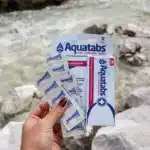
How To Use Aquatabs
November 15, 2024 Uncategorized

